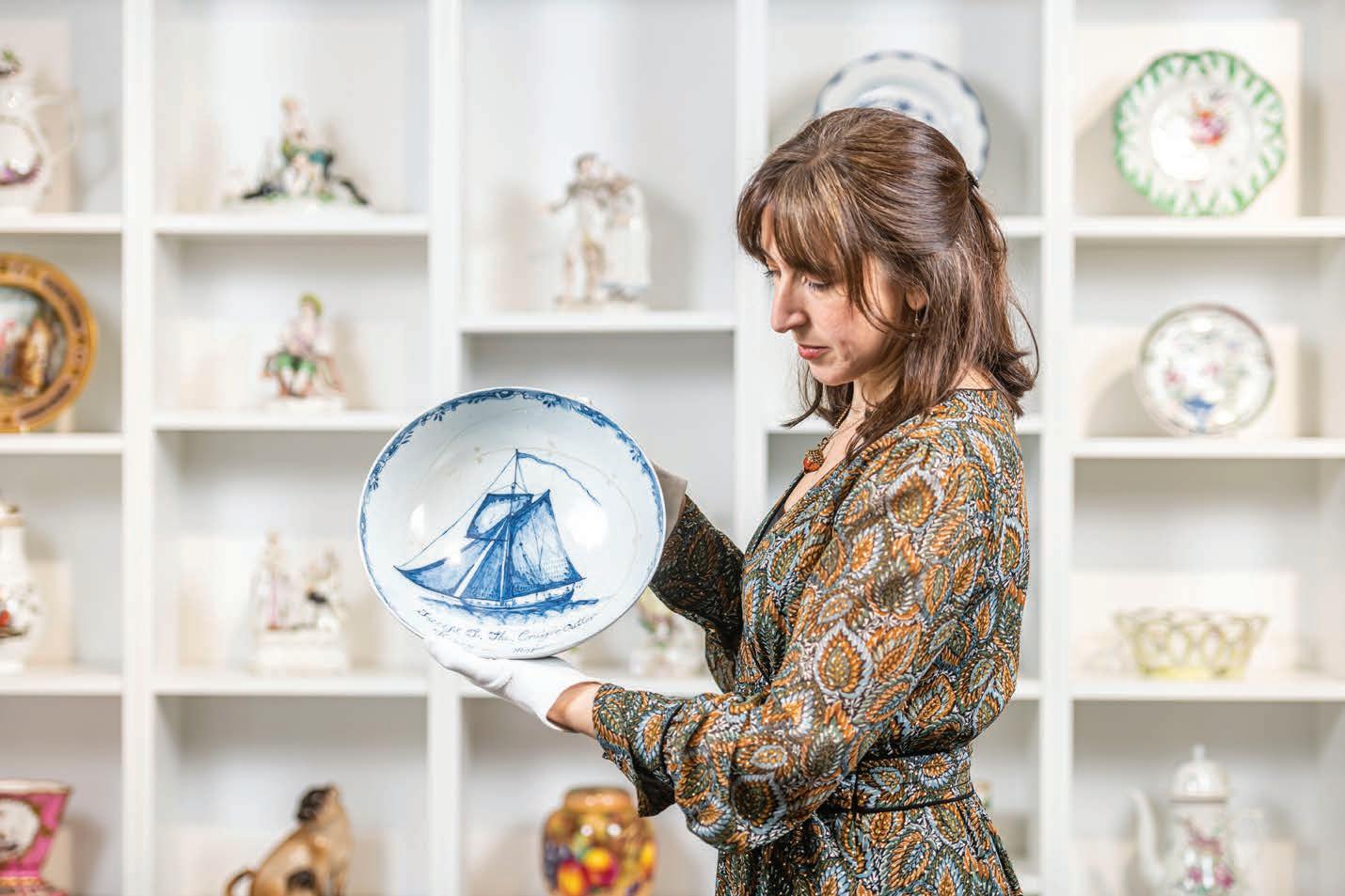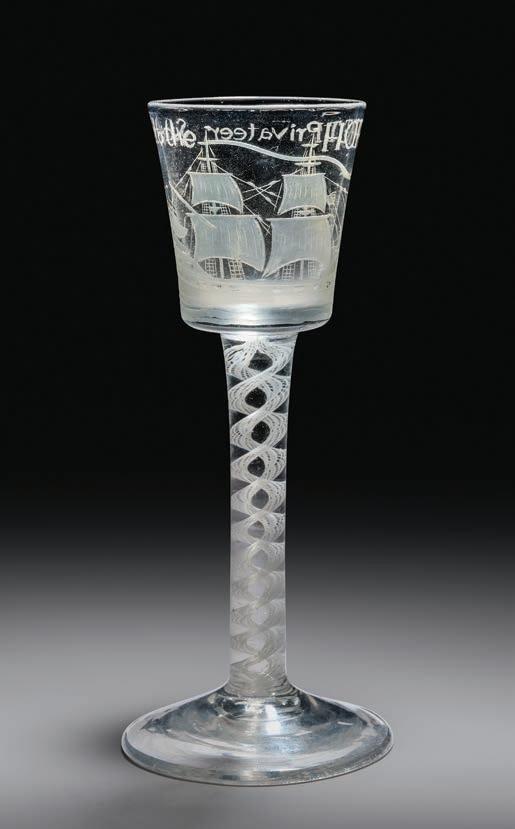
2 minute read
BRITISH & CONTINENTAL CERAMICS & GLASS
Success To The Privateer
Many a Hollywood film has been made depicting the swashbuckling life of pirates, with names such as Blackbeard, Henry Morgan and Calico Jack reverberating through history. Far more common, and yet less well-documented, is the practice of privateering that dominated English shores during times of war.
Advertisement
The second half of the 18th century was a prime time for privateering – a form of legalised piracy where mariners were granted permission to attack and pillage the ships of Britain’s foreign enemies (usually France and Spain). During the Seven Years War (1756–63) letters of marque were issued to owners of small and large sailing vessels alike, and the process continued for various conflicts up until 1856, when privateering was abolished.
In the early 1990s, research undertaken on a large Lowestoft porcelain bowl was able to relate it to a family of privateers living in Folkestone, Kent. Records indicate that the Major family were operating off the coast of Kent with letters
Clare Durham +44 (0)1722 424507
of marque for a period of some 20 years, and the bowl (inscribed for Henry Major) was probably made to commemorate their first foray into privateering in 1761. It sold in our auction on 21st February for £4,375 – the price being kept down by a substantial riveted crack, which deterred several collectors.

More commonly seen at auction, but still rare, are wine glasses commemorating privateering vessels. These were often made as gifts to enterprising captains or ship owners. They were made for ordinary merchantmen as well, but it is the examples that can be related to privateering that command the higher prices among collectors.


One example in our upcoming April auction is inscribed ‘Success to the HORNET Privateer’. The National Archives record letters of marque in August 1758 for a ship called The Hornet, owned by Richard Earnshaw and the Company of London; and also in October of the same year owned by the Company of Bristol. However, another privateer of the same name is recorded in 1777 operating out of Liverpool.
Many of the privateers operated out of Bristol and one of the best known of these was a frigate called Eagle. These are well documented in a 1930 book by Damer Powell. The Eagle was purpose-built as a privateer and took to the seas in 1756 under the command of Captain John Knill, whose name appears on several recorded privateer wine glasses. An example in our April sale is inscribed for Benjamin Huntly with the date 1757. Few records of sailors on privateer vessels survive and nothing is known of Huntly’s connection with the Eagle A Captain Benjamin Huntley of the Friendship is recorded as prosecutor in a trial at the Old Bailey in 1794, which may be the same man but sadly many of the individuals behind Britain’s extensive privateering industry have become buried in history.










